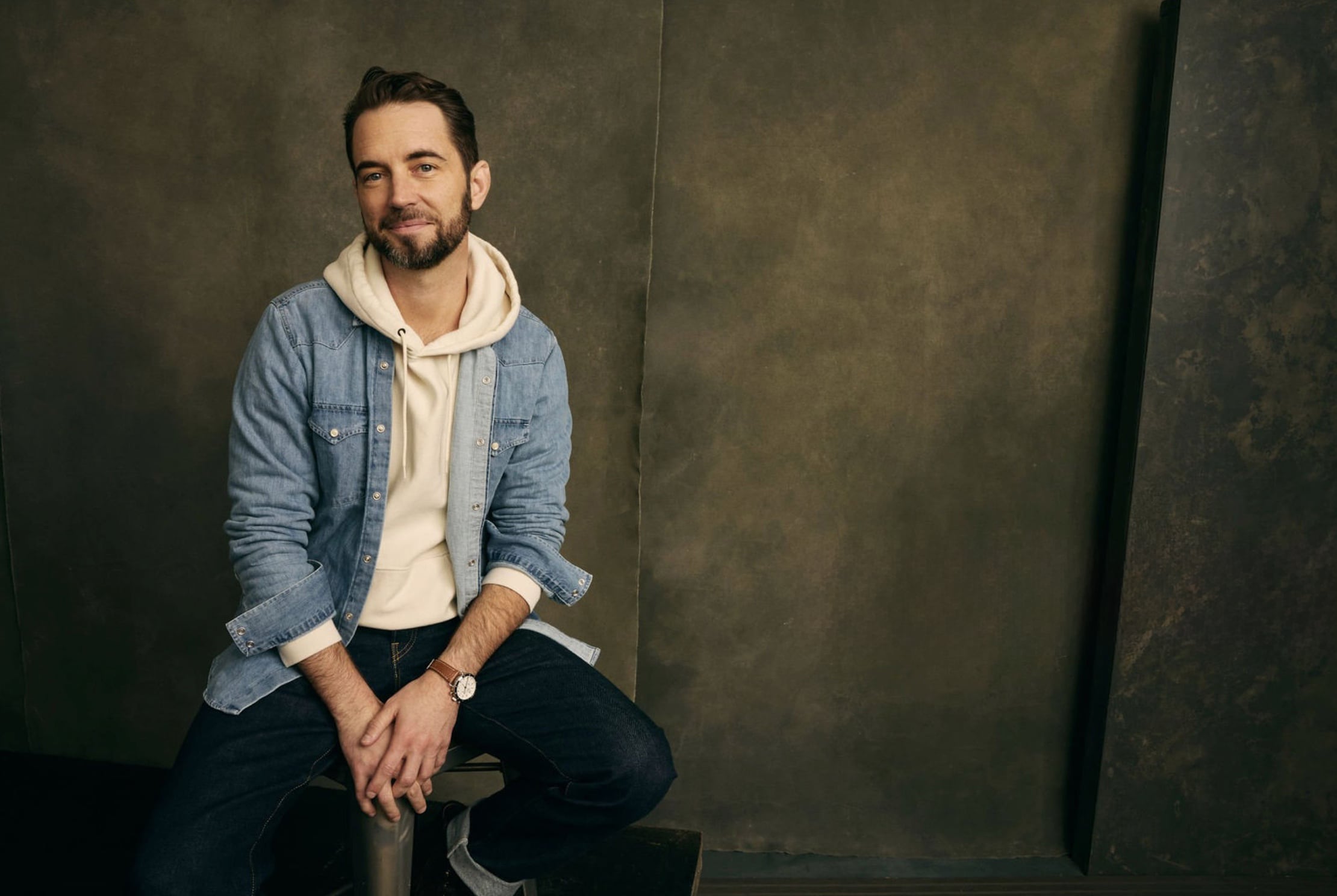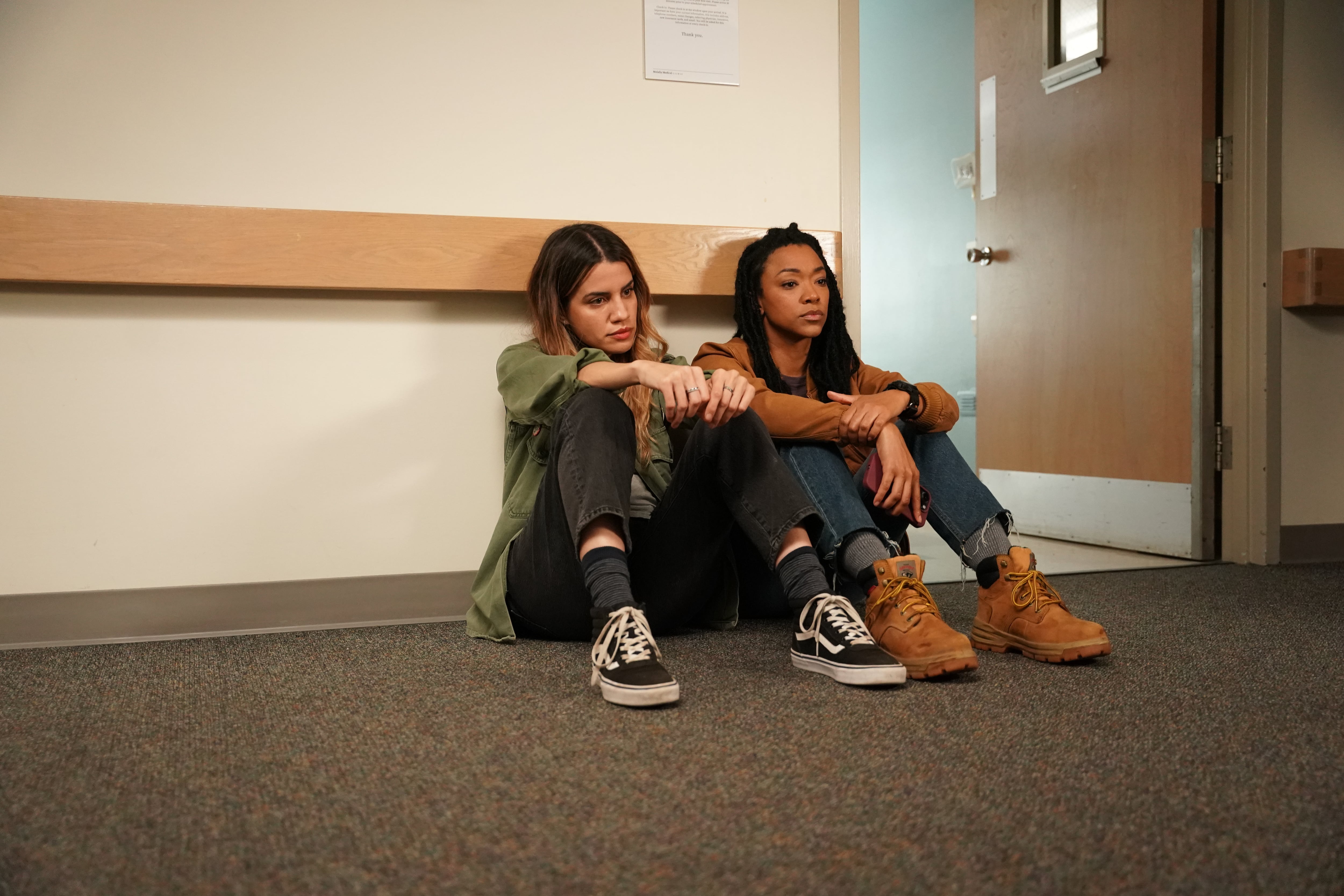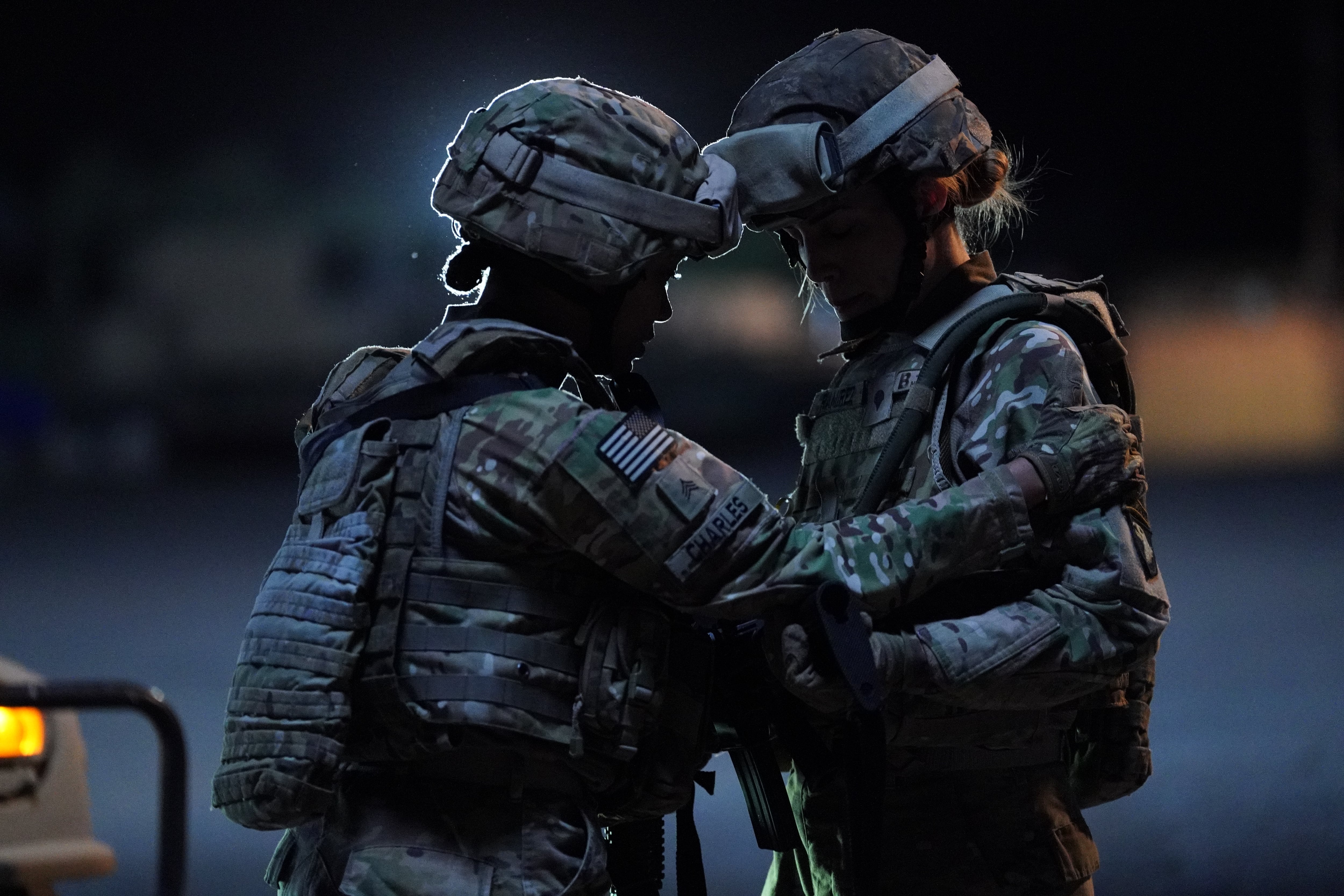My Dead Friend Zoe opens with the familiar image of a soldier returning home, but the weight that follows is anything but typical.
Directed by Army veteran and filmmaker Kyle Hausmann-Stokes, the film traces the uneasy civilian life of Merit, an Afghanistan war vet haunted by the ghost of her best friend and fellow soldier, Zoe.
What could’ve been a flat metaphor is instead a fully embodied character — Zoe isn’t a hallucination. She’s funny, she’s maddening and she’s always there. Just like grief. Just like guilt.
In his feature debut, Hausmann-Stokes doesn’t try to romanticize the cost of war. This story is told from the inside, with the burden of accuracy. He served. And it shows.
That authenticity is the film’s greatest strength. It doesn’t wave flags or lean on clichés. Instead, it sits with discomfort — sometimes awkward, sometimes hilarious, sometimes harrowing.
“About 93% of this film is true [and] is autobiographical,” Hausmann-Stokes told Military Times. “Now, I didn’t see a visual manifestation of one of my dead platoon mates, but it certainly felt like that a lot of the time. ... What I wanted to show was what it’s like to live pre-talking about [PTSD] and what it’s like to live post-talking about it. Movies are a great way to do that.”
Merit, played with sharp vulnerability by Sonequa Martin-Green, is neither a victim nor a symbol. She’s deeply flawed, quick to deflect with humor and struggling to hold together the fractured pieces of her life after the war.
The film’s emotional axis is her dynamic with Zoe, played by Natalie Morales. Zoe is not a ghost in the traditional sense. Instead, she’s a presence Merit cannot — and maybe doesn’t want to — cast off. Their conversations are funny and biting, anchored in shorthand uniquely forged through shared trauma.
The scenes between them never dip into sentimentality, and that’s a credit to the writing as much as the performances.
Morales plays Zoe with the breezy confidence of someone who never has to deal with consequences, because she’s already dead. Martin-Green plays off that energy with tension and restraint. Together, they bring out the humor and horror of memory itself.
“[Martin-Green and Morales] both did lots of research,” Hausmann-Stokes said. “Ninety percent of the people working on this film were vets, too, so they got to kind of vibe off them and me, because I was their source material. They were great.”
The film, meanwhile, does not just linger in the past. Much of My Dead Friend Zoe progresses in group therapy sessions. These scenes are notable not just for their content, but for how they were made — largely unscripted and performed by actual veterans. The result is as raw as it is unpredictable.
Every interaction has an edge, a kind of unspoken understanding that can only come from lived experience. It’s the closest any recent film has come to capturing what a real vet therapy group might sound like — half sarcasm, half survival.

“In not writing dialogue for the veterans, it really revealed how if you just create the circumstances, it’s pretty amazing what comes out,” Hausmann-Stokes said. “It was pretty cool — we were making a movie and doing therapy at the same time.”
Ed Harris brings quiet weight as Merit’s aging grandfather, a Vietnam veteran himself. His scenes with Martin-Green crackle with intergenerational tension, a reminder that war’s ghosts rarely die with the soldier.
Morgan Freeman, in a more subdued but crucial role, serves as the anchor of the therapy group, his presence adding gravity without stealing scenes. Both characters challenge Merit to confront not just her trauma, but her complicity in holding onto it.
The film’s technical execution leans toward realism — minimal score, natural lighting, handheld camera work — but it also knows when to break form.
Dream sequences bleed into the mundane, memory interrupts the present and conversations with a dead friend happen mid-laundry. Hausmann-Stokes isn’t trying to create spectacle; he’s showing how trauma rewires a life.
“In the military, it’s a world where we try to control everything we can, and there’s routine which gives us some comfort because you can’t control war or a mission or things like that,” he said. “I think once a lot of us get out into the civilian sector, it’s hard, man. I think people drastically underestimate that the civilian world is so much harder than the military in so many ways.
“So, when Merit in the film gets some bad news or has some emotions bubbling up that she can’t deal with, yes, she’s going to revert to that routine, that system. ‘How can I exert some control in this moment?’ And then Charlie Mike.”

What makes My Dead Friend Zoe particularly resonant for the military community is its refusal to resolve neatly. There’s no “moment of triumph,” no discharge papers for the psyche.
The film is more interested in how people live with the aftermath — how they function, or fail to, long after the uniform comes off. It portrays PTSD not as a cinematic explosion, but as a slow erosion. And yet, it’s not hopeless.
There are moments of levity that land surprisingly hard. Zoe’s commentary often cuts through Merit’s self-seriousness. A recurring bit about running — both literal and emotional — becomes one of the film’s most potent metaphors. This isn’t a trauma dump; it’s a story about staying alive with the things that won’t leave you.
“I want us as a country, as a species, to talk about [post-traumatic growth] more. How the hard things that we live through, that we survive — we are not weaker because of them. We’re not victims to them. We’re stronger because of them,” Hausmann-Stokes said. “You realize that you can persevere and that you’re stronger for it. Whether you’re at war ... or you lose somebody.
“Veterans don’t own PTSD,” Hausmann-Stokes added with a laugh, “we just might be the best at it.”
Critically, the film does not stop depicting women’s unique challenges in uniform. Merit’s story reflects a seldom-seen perspective in war films, and it’s long overdue.
Her struggles aren’t simply about battlefield memories — they’re about being unheard, unseen and misunderstood by the system she served. The film handles this without preachiness, trusting its characters to carry the weight.
“I didn’t serve alongside women when I was in the military. I was in the infantry; I was in combat arms. At that time, women couldn’t serve in combat arms roles. That’s now changed, but I didn’t have that experience,” Hausmann-Stokes said. “I was directing a big campaign for the VA called ‘Make the Connection.’ I interviewed close to 500 vets across the country. I met so many female veterans who just blew my mind with their stories and what they had done. After doing that, [casting female leads] wasn’t even a choice for me.”
Ultimately, My Dead Friend Zoe doesn’t aim to be definitive. It doesn’t pretend to speak for all veterans. It tells one story — specific, strange, and deeply personal — and lets that truth resonate.
That might be its greatest strength. The trauma is real, but so is the humor. The ghosts are persistent, but so is the need to learn from them and grow.
This film isn’t just a must-watch, it’s a necessary one.
My Dead Friend Zoe is available to rent or buy at home on the Apple Store, Amazon Prime and all major VOD platforms.www.mydeadfriendzoemovie.com





